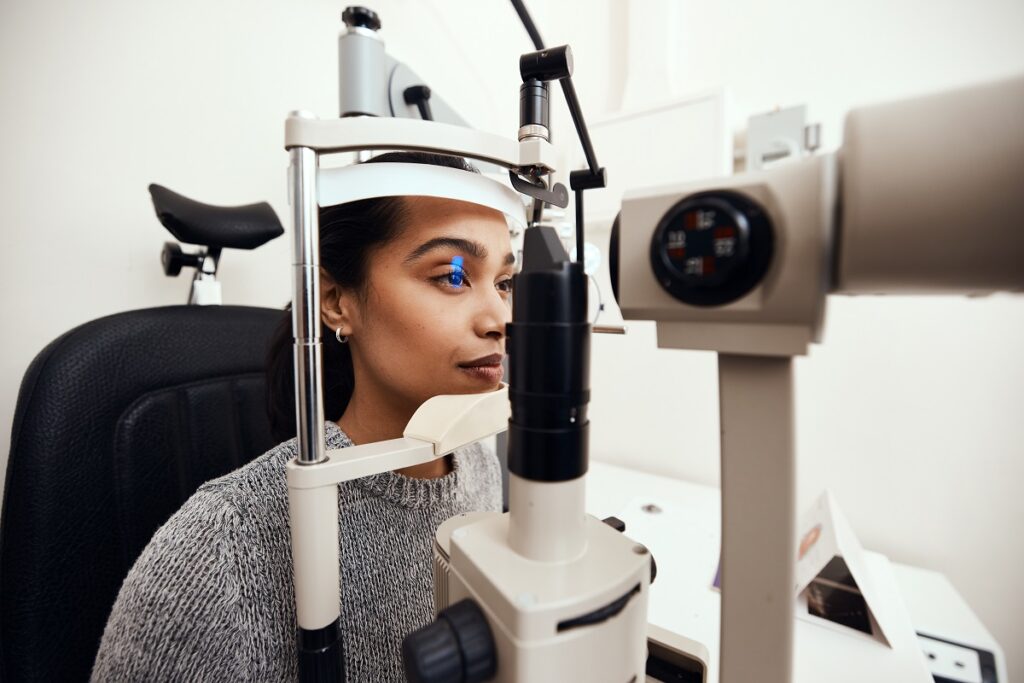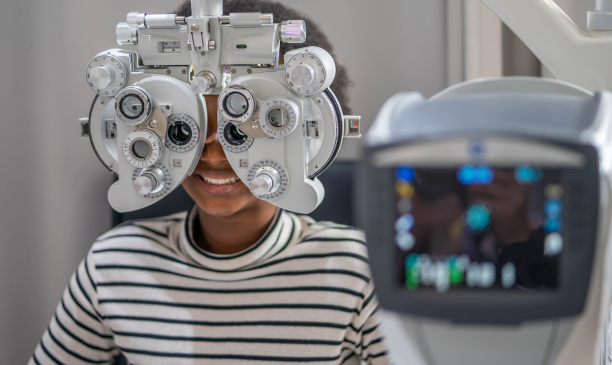Trustworthy Eye Doctor for All Your Vision Needs in Riverside
Trustworthy Eye Doctor for All Your Vision Needs in Riverside
Blog Article
The Comprehensive Eye Exam: What to Anticipate During Your Visit to the Eye Physician
A visit to the eye doctor for a detailed eye test is greater than a routine exam; it is an essential action in guarding your aesthetic health and wellness. From the first discussion of your clinical background to the accuracy of the aesthetic skill examination, each part of the examination offers a certain function. Yet what exactly occurs throughout the eye health and wellness analysis, and exactly how does it influence the prescription process? Comprehending these aspects is essential for those that desire to maintain optimum sight. As we discover each part, the value of follow-up suggestions will certainly likewise end up being clear.
First Consultation
The initial appointment throughout an eye exam acts as a vital structure for recognizing a patient's aesthetic health needs. This phase sets the tone for the whole evaluation procedure, permitting the optometrist to gather vital info regarding the person's clinical history, way of life, and particular vision issues. By diligently examining any pre-existing conditions, medicines, or previous surgical treatments, the eye treatment professional can tailor the exam to address private needs efficiently.

Moreover, the preliminary appointment is a possibility for people to articulate any kind of problems or inquiries, cultivating a joint partnership with their doctor. This communication not only guarantees that the patient feels informed and comfortable yet additionally equips them to take part actively in their eye wellness monitoring. Collectively, these discussions make it possible for the eye doctor to develop an individualized evaluation strategy, making sure ideal treatment and exact diagnosis.
Aesthetic Skill Test
Starting the core elements of an eye exam, the visual skill test is created to assess the intensity and quality of a client's vision. This critical examination aids identify just how well an individual can discern letters or icons at a standardized distance, commonly making use of a Snellen chart (Opticore Optometry). The graph comprises rows of letters that reduce in dimension from top to bottom, with the individual placed at a customary distance of 20 feet
During the examination, the patient is asked to cover one eye and read out loud the tiniest line of letters they can see plainly. This procedure is repeated for the other eye. The results are recorded as a portion, with 20/20 vision showing normal visual acuity-- where the person can see at 20 feet what a person with normal vision can see at that range.
The aesthetic acuity test likewise recognizes potential refractive errors such as astigmatism, myopia, or hyperopia, which could necessitate corrective lenses. By establishing a standard of aesthetic efficiency, the test is an important diagnostic tool that helps the eye care expert in establishing a proper therapy strategy customized to the individual's special visual requirements.
Eye Health Assessment
Following the visual acuity examination, a comprehensive eye health analysis is performed to make sure the general wellness of the eyes. This important section of the eye exam involves a comprehensive assessment of both the outside and internal frameworks of the eye. The ophthalmologist or optometrist starts by taking a look at the eyelids, cornea, conjunctiva, and sclera for any type of signs of infection, inflammation, or problems. Making use of customized tools like a slit light, the practitioner obtains a magnified sight of the eye's anatomy, making it possible for thorough assessment.
Following, interest changes to the internal frameworks. Through the usage of ophthalmoscopy or fundus digital photography, the retina, optic nerve, and blood vessels are diligently assessed. This action is important for recognizing conditions such as retinal detachment, glaucoma, or diabetic person retinopathy. In most cases, student expansion is performed to improve visibility of the interior eye frameworks, although this may lead to temporary light sensitivity for the person.
In addition, intraocular stress is measured to screen for glaucoma threat. This is typically done making this link use of tonometry, which can detect elevated stress levels that could suggest potential damage to the optic nerve. Jointly, these analyses create a comprehensive evaluation to maintain eye health.
Refraction and Prescription
Refraction is a sophisticated treatment carried out by eye care professionals to identify the specific lens power needed to deal with refractive errors such as myopia, astigmatism, hyperopia, and presbyopia. The objective of this treatment is to evaluate exactly how light bends as it passes via the eye, allowing the specialist to identify whether rehabilitative lenses are essential for boosted visual acuity.
Throughout the refraction process, the patient is asked to check out a phoropter, a gadget which contains different lenses. The practitioner will systematically alter these lenses and ask the patient to contrast clearness between alternatives till the very best possible vision is accomplished. This treatment is vital in crafting a precise prescription that specifies the ideal lens power for glasses or call lenses.
The prescription stemmed from this procedure not only enhances vision but also acts as a foundation for picking ideal restorative eyewear. It is vital to make sure that prescriptions are on a regular basis updated, as changes in vision can happen in time, emphasizing the significance of regular eye examinations. This thorough attention to detail aids maintain clear, comfy vision in daily life.
Follow-Up Suggestions

During a follow-up see, the eye medical professional will certainly carry out a series of examinations to evaluate aesthetic acuity and check for any kind of changes in vision that could demand an update to the prescription. In addition, the follow-up provides a chance to talk about any kind of discomfort or problems experienced with existing eyewear. Changes can be made to ensure convenience and efficiency, whether through lens modification or framework changes.
For people with ongoing problems such as glaucoma, diabetes-related eye issues, or macular degeneration, even more regular follow-ups might be necessary. These consultations are crucial for handling and possibly slowing the development of eye condition. Sticking to these referrals can substantially add to preserving visual health and preventing long-lasting difficulties.
Conclusion
The extensive eye examination is a vital procedure for keeping visual health, encompassing a detailed evaluation of case history and vision problems. Secret parts include the aesthetic skill test, which reviews sight clearness, and the eye health analysis, which analyzes the total problem of the eyes. Refraction tests help establish the exact lens prescription needed for ideal vision modification. Follow-up recommendations provide guidance additional hints for continuous eye treatment, making certain that any potential issues are attended to immediately and properly.
A check out to the eye physician for a detailed eye examination is more than a routine check-up; it is an essential step in safeguarding your visual wellness.Kicking off the core parts of an eye exam, the aesthetic acuity examination is made to analyze the intensity and quality of a person's vision.Following the visual acuity examination, a comprehensive eye health analysis is conducted to ensure the overall health of the eyes. These visits permit the eye treatment specialist to monitor modifications in vision, update useful reference prescriptions, and assess the overall health of the eyes. Trick parts consist of the aesthetic acuity test, which reviews sight quality, and the eye health assessment, which analyzes the general problem of the eyes.
Report this page